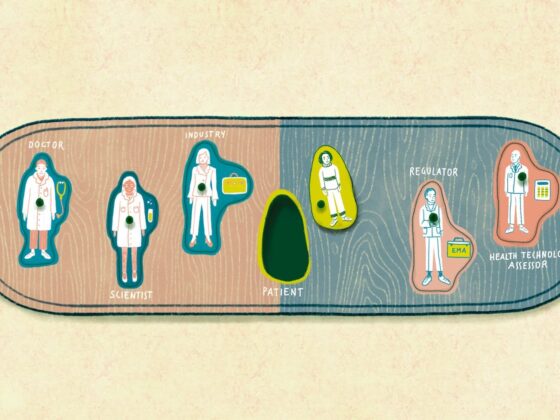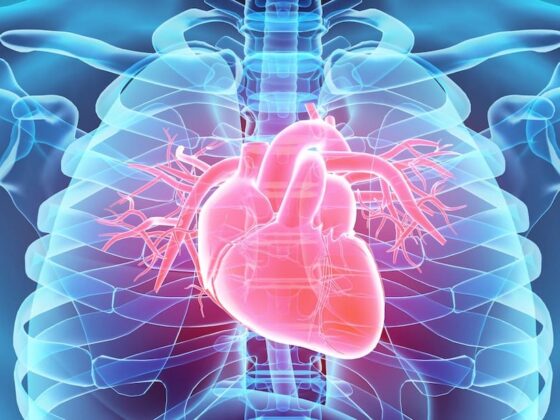Vitamin D has drawn much scientific interest and media coverage in recent years, and increasingly so in 2020, when a link was found between vitamin D deficiency and Covid-19. This is a very unusual vitamin, in that it behaves both as a hormone and a vitamin – our skin produces it through exposure to sunlight − but it is also supplemented by diet, one of its primary sources being oily fish. In cancer, vitamin D levels are inversely correlated to risk; it has neoplasia-suppressive effects, as recent trials confirm.
Among the most interesting findings from the huge volume of research relating to the Covid-19 outbreak is the emergence of Vitamin D as a possible biomarker.
There is a discussion about whether, along with obesity, diabetes and high blood pressure, vitamin D deficiency is associated with vulnerability to coronavirus infection and with the severity of the disease. (Mitchell F. Vitamin-D and COVID-19: do deficient risk a poorer outcome?. Lancet Diabetes Endocrinol. 2020 Meltzer DO Association of Vitamin D Status and Other Clinical Characteristics With COVID-19 Test Results. JAMA Netw Open. 2020)
As oncologists and cancer researchers, we know that low levels of vitamin D increasingly appear to be correlated with cancer risk and worse prognosis, as well as with response to chemotherapy. In trials, vitamin D supplementation appears promising for cancer control, as recent news has also suggested.
It is one of many potential biomarkers of sars-2-cov susceptibility and infection that are being studied by disciplines other than virology, mostly oncology and rheumatology. Interleukin 6 and interleukin 1 are other examples.
What it is and how it works
Vitamin D is a steroid hormone; the major molecular moieties in this group are vitamin D3 (cholecalciferol) and vitamin D2 (ergocalciferol). Various modified forms exist, including calcifediol (25-hydroxyvitamin D or 25(OH)D), an indicator of vitamin D levels in the blood, and calcitriol (1,25-dihydroxyvitamin D or 1,25(OH)2D), an active hormonal form.
Cholecalciferol is synthesised in skin epidermis, and the reaction is catalysed by sun exposure (mostly UVB). With less efficiency, cholecalciferol and ergocalciferol can also be absorbed from the diet, and vitamin D can be provided as a supplement.
The hormone exerts its actions through the vitamin D receptor, which is part of the nuclear receptor family (as is, for example, the oestrogen receptor, NdA). The vitamin D receptor mediates vitamin-D-stimulated calcium metabolism, but it also exerts other cellular effects by translocating to the nucleus, binding to DNA-responsive elements and modulating gene expression.
The link with cancer
Vitamin D levels are inversely correlated to cancer risk. The vitamin has suppressive effects on neoplasia, and various mechanisms of action mediating cancer cell inhibition have been described.
One of the major investigators into the vitamin D and cancer liaison is Edward Giovannucci, (Professor of Nutrition and Epidemiology , Harvard Medical School, Boston), who received the 2019 AACR-ACS Award for Research Excellence in Cancer Epidemiology and Prevention, and recently co-authored a JAMA paper on the ‘Effect of Vitamin D3 Supplements on Development of Advanced Cancer’.
To follow up on the hypothesis of reductions in cancer deaths, the team evaluated whether vitamin D reduces the incidence of advanced (metastatic or incurable) cancer and examined possible effect modification by body mass index, in the VITAL trial (VItamin D and omega-3 TriAL). VITAL <ClinicalTrials.gov Identifier: NCT01169259> is a randomised, double-blind, placebo-controlled, 2×2-factorial clinical trial of vitamin D3 (cholecalciferol, 2000 IU/d) and marine omega-3 fatty acids (1 g/d). The trial was designed to test the independent effects of vitamin D and omega-2 supplements, and test for synergy between the two. It concluded that supplementation with vitamin D reduced the incidence of advanced (metastatic or incurable) cancer in the overall cohort, with the strongest risk reduction seen in individuals with normal weight (not obese) (Chandler PD Effect of Vitamin D3 Supplements on Development of Advanced Cancer: A Secondary Analysis of the VITAL Randomized Clinical Trial. JAMA Netw Open. 2020). A Giovannucci paper in a monograph dedicated to vitamin D and cancer Sunlight, Vitamin D and Skin Cancer summarised that “the results from meta-analyses support that achieving circulating levels of 25(OH)D around 54–135 nmol/l may contribute to reducing cancer mortality. Although the optimal 25 (OH)D level for prevention is not established, it is likely to be higher than 50 nmol/l, and currently, a substantial portion of the world’s population is below even this threshold.” (Hanseul Kim H and Giovannucci E Vitamin D Status and Cancer Incidence, Survival, and Mortality, J. Reichrath (ed.), Sunlight, Vitamin D and Skin Cancer, Advances in Experimental Medicine and Biology 1268)
To have the right levels in our system, without the intake of man-made supplements, is no easy task. To synthesise enough vitamin D through sunlight exposure we should ideally live in sunny countries, but also lead a lifestyle that involves a lot of time outdoors, wearing skimpy clothes (short sleeves, no gloves), and no sunscreen products filtering UVB. As for diet, the only way to compensate for lack of sun exposure would be to follow the traditional diets of populations in cold climates, which are heavily based on fatty fish. Both hypotheses are non-viable for obvious reasons, from health risks related to high-fat diets and prolonged exposure to UV rays, to economic, religious, ethnic, and social factors that influence our diets, our lifestyles, and also our constitutions.
The Endocrine Society recommends at least 1500–2000 IU/day intake of vitamin D to maintain the levels of 25(OH)D above 75 nmol/l.
A historical perspective
Vitamin D was discovered in the first half of the twentieth century, but, from time immemorial, people have empirically understood the benefits of both sun exposure and intake of oily fish to prevent or cure a number of ailments, mainly affecting bones and lungs.
In the third book of his Histories, the Ancient Greek historian Herodotus (c. 484 – c. 425 BC) recounts his visit to the site at Pelusium, where, almost a century earlier, an important battle had taken place between Persians and Egyptians. The bones of the dead were still scattered on the battlefield, Egyptians on one side, Persians on the other. Herodotus noted that the skulls of the Persians were so brittle they would be pierced by simply throwing a pebble at them, while those of the Egyptians were so strong that they would not even crack upon receiving a much stronger blow. Puzzled, he was told by the locals that the Egyptians shaved their heads from childhood and their skull thickened by exposure to the sun. This was also the reason why there was no known case of baldness among them. On the other hand, Herodotus continues in his aetiology, Persians always covered their heads with felt hats. He therefore deduced it must be lack of exposure to the sun that made their skulls brittle.
Jumping forward from antiquity to the beginning of the last century, one in four children in Britain were affected by the bone disease known as rickets. So common was it in that part of the world that it was nicknamed the English disease, although other countries, particularly the United States, were also ravaged by it. The need to find a solution prompted research for a chemical factor that would make the empirical remedies of exposure to sunlight and ingestion of cod liver oil, successful in alleviating or curing the condition. Leading researchers, such as McCollum, Mellanby, Windaus, and others, identified this factor with a vitamin that, as the fourth discovered, was named D. The introduction of vitamin D-fortified milk and margarine, alongside sun exposure and cod liver oil, brought about an almost complete eradication of rickets – after which, chemical research on this vitamin, its components and action, stagnated. There were a few interesting discoveries relating to the mobilisation of calcium in the 1950s and again in the 1970s, but it is only in the past couple of decades that interest in the sunshine vitamin has been rekindled.
Aside from the need to tackle a global resurgence of rickets, it was the identification of the vitamin D receptor that excited the curiosity of the scientific community, as it is also found in tissues with no involvement in calcium homeostasis, such as skin, breast, pancreas, T cells, and so on. In other words, it appears that vitamin D plays a role that goes well beyond the skeletal muscle, into many areas of immune function and disease prevention. It affects heart, lungs, cancer development and progression, obesity, Covid-19, and even depression. It has become almost a panacea in the eyes of doctors and consumers alike, with clinics carrying out vitamin D tests for a wide variety of conditions. Needless to say, the sale of vitamin D supplements has skyrocketed during the pandemic of 2020.
The cure of sunlight and cod liver oil for conditions other than skeletal is also well rooted in history. People with tuberculosis were usually treated with both. In Victorian times, those patients who could afford it went to the Italian or French Riviera in winter to benefit from sunlight and clean air. Menton, on the French Italian border, became one of the most popular health destinations thanks to the publicity given it by James Henry Bennett, a London physician, who, having contracted tuberculosis, “…departed southward in the autumn of the year 1859 to die in a quiet corner…” But die he did not. Instead, staying in Menton, he made a full recovery… His book Winter and Spring on the Shores of the Mediterranean became a sought-after read. The same Bennett is also author of the treatise On the treatment of pulmonary consumption: by hygiene, climate, and medicine. In the chapter entitled ‘The medicinal treatment of phthisis’, he acknowledges the benefits of cod liver oil, but only in conjunction with other remedies such as exercise and sunlight. He is also puzzled as to what substance contained in the fishy oil produces the curative effect.
Interestingly, in the 1800s there was already an awareness of the possible co-morbidity of pulmonary and bone conditions. Charles Dickens’ Tiny Tim, the very sick child in A Christmas Carol, probably had both rickets and tuberculosis. Earlier in the century, in 1813, the British naturalist William Turton published a book with a most intriguing title: Some observations on consumption, scrofula or King’s evil, gout, asthma, softness and distortion of the bones, rickets, cancer, insanity, and other chronical diseases, with reasoning on their remote origin, probable affinity, and means of prevention and cure. Unfortunately, the underlying common factor, vitamin D, had not yet been discovered.
Conclusions
Almost 10 million cancer deaths occur yearly worldwide. With increasing population size and aging, cancer incidence and mortality are likely to rise over time. The most abundant data on the protective role of vitamin D relate to colorectal cancer. The evidence is increasing for several more cancers, including prostate and breast . For some cancers there are too few studies, done in individual cohorts, to draw conclusions. The current literature is now providing more data relating to vitamin D and Covid-19. Obviously, we must not forget how this hormone is bound up with our bone health.
How many more miracles the sunshine vitamin has in store will be revealed in the not so distant future. This is undoubtedly a vitamin that keeps on giving.
With the contribution of Francesca Albini, PhD
Illustration by Alessandra Superina












